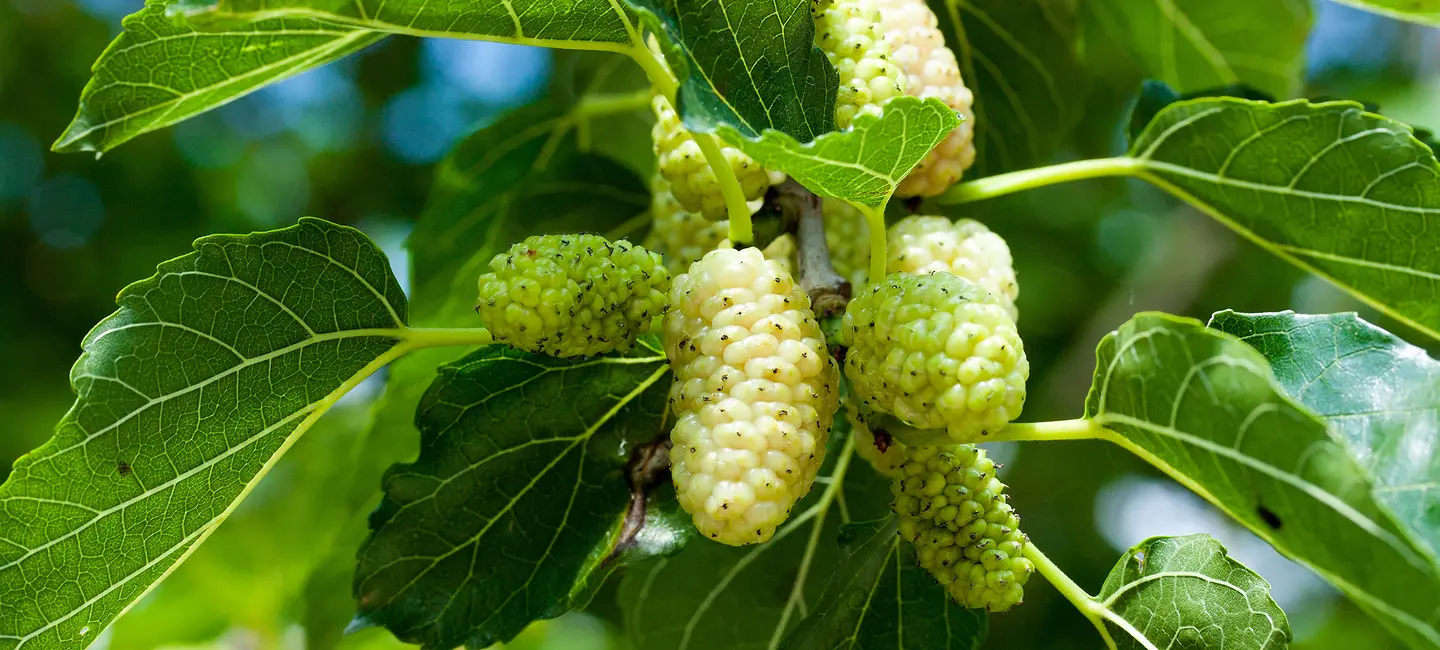
White mulberry (Morus alba) is a shrub or tree native to China. It has a white colored fruit similar to a blackberry, but with an unpleasant taste.
Chemicals in white mulberry work similarly to some medicines used for type 2 diabetes. They slow the breakdown of sugar in the stomach so that it's absorbed more slowly into the blood. This helps the body keep blood sugar levels in a healthy range.
People commonly use white mulberry for diabetes. It is also used for high cholesterol levels, high blood pressure, the common cold, and many other conditions, but there is no good scientific evidence to support these uses.
Is It Effective?
There is interest in using white mulberry for a number of purposes, but there isn't enough reliable information to say whether it might be helpful.
Is it Safe?
When taken by mouth: The powdered leaf of white mulberry is possibly safe for most people when taken for up to 12 weeks. It might cause bloating, constipation, gas, and loose stools in some people. There isn't enough reliable information to know if white mulberry berries are safe when taken as a medicine or what the side effects might be.
Special Precautions & Warnings:
Pregnancy and breast-feeding: There isn't enough reliable information to know if white mulberry is safe to use when pregnant or breast-feeding. Stay on the safe side and avoid use.
Medications for diabetes (Antidiabetes drugs)
Interaction Rating=Moderate Be cautious with this combination.
White mulberry leaf might lower blood sugar levels. Taking white mulberry leaf along with diabetes medications might cause blood sugar to drop too low. Monitor your blood sugar closely.
Medications moved by pumps in cells (Organic cation transporter 2 (OCT2) substrates)
Interaction Rating=Moderate Be cautious with this combination.
Some medications are moved in and out of cells by pumps. White mulberry might change how these pumps work and change how much medication stays in the body. In some cases, this might change the effects and side effects of a medication.
Herbs and supplements that might lower blood sugar: White mulberry leaf might lower blood sugar. Taking it with other supplements with similar effects might lower blood sugar too much. Examples of supplements with this effect include aloe, bitter melon, cassia cinnamon, chromium, and prickly pear cactus.
There are no known interactions with foods.
White mulberry leaf powder or extract has most often been used by adults in doses of 0.8-1 gram three times daily for up to 3 months. Speak with a healthcare provider to find out what dose might be best for a specific condition.
Chinese White Mulberry, Chi Sang, Chin Sang, Common Mulberry, Egyptian Mulberry, Mon Tea, Mora, Moral Blanco, Morera Blanca, Morin, Morus alba, Morus indica, Morus multicaulis, Mûrier Blanc, Mûrier Blanc de Chine, Mûrier Commun, Mûrier du Ver à Soie, Russian Mulberry, Silkworm Mulberry.
Information on this website is for informational use only and is not intended to replace professional medical advice, diagnosis, or treatment. While evidence-based, it is not guaranteed to be error-free and is not intended to meet any particular user’s needs or requirements or to cover all possible uses, safety concerns, interactions, outcomes, or adverse effects. Always check with your doctor or other medical professional before making healthcare decisions (including taking any medication) and do not delay or disregard seeking medical advice or treatment based on any information displayed on this website.
© TRC Healthcare 2024. All rights reserved. Use and/or distribution is permitted only pursuant to a valid license or other permission from TRC Healthcare.
